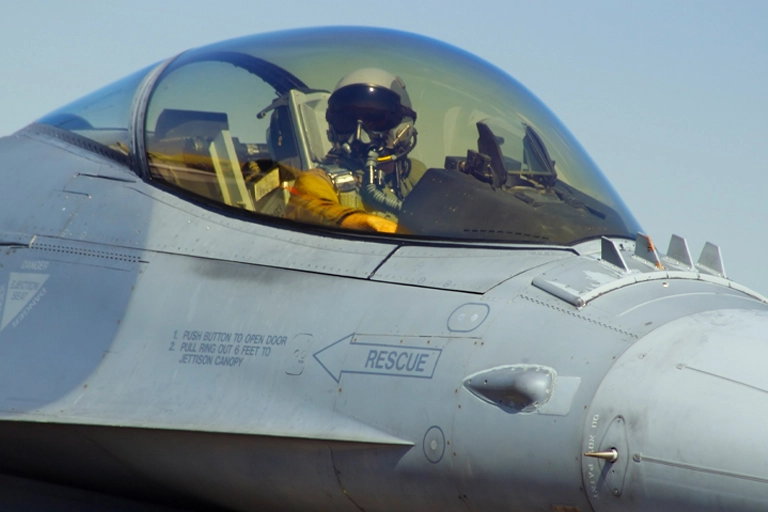The recent release of “Top Gun: Maverick” has put a spotlight on naval aviators and the struggles that they face. One problem many movie fans may not consider when watching the elite fighters fly is that getting enough air is not a given. In fact, despite advanced systems designed to keep pilots breathing, hypoxia is still a huge problem and something every fighter pilot must be ready to battle each time they enter the cockpit.
How Does Hypoxia Happen?
Hypoxia occurs when the brain does not get enough oxygen. At sea level, the air is pushing down on someone with enough pressure that oxygen can easily get in and out of healthy lungs. But as altitude increases, there is less air pressure because there are fewer air molecules, meaning it becomes harder to get enough oxygen into the lungs. When someone reaches a point when the atmospheric air pressure is not sufficient to push enough oxygen into the lungs and circulate the bloodstream, symptoms of oxygen deprivation will begin.
For most people, this occurs around 10,000 feet above sea level. The first symptoms are tingling in fingers and toes, followed by light-headedness and mild euphoria. Left unchecked, this can rapidly lead to confusion and eventually loss of consciousness. For fighter pilots in particular, confusion can make taking simple steps such as recalling emergency training, checking the oxygen supply or dropping to a lower atmospheric level, hard to think through. This means that, for single seat aircrafts like the ones Maverick frequents, hypoxia’s final symptom, loss of consciousness, can be deadly.
What Do Oxygen Masks Do?
Nowadays, most fighter jets have a dynamic pressurization system. This means that as the aircraft climbs and descends, the pressure inside the cockpit changes. However, the problem is that even with the most advanced systems, the changes are still not enough to offset the loss of oxygen in the atmosphere at high levels.
In addition, G-force, or the acceleration we feel due to the force of gravity, puts added pressure on the pilot’s body. This is what happens when pilots do those amazing tricks and spin out of the way of enemy fire in the movies. For reference, if you have ever done a loop on a roller coaster, you have likely experienced 2 or 3G. You may recall the pressure that pushed you into the seat and made it hard to move or breathe. In comparison, during any maneuvering, modern fighter pilots deal with 9G, or approximately 2,000 pounds of crushing gravity that makes it almost impossible to draw breath.
This is why oxygen masks become essential. Oxygen masks introduce positive-pressure and force air into the lungs, which can counter the effects of hypoxia caused by rising altitudes and G-force. Today, military regulations require all fighter pilots to be on oxygen above 10,000 feet, and since these aircraft can climb to high altitude in seconds, pilots are commonly required to wear masks from start to finish.
The Ongoing Fight
Despite all this, in 2018 NASA concluded that too many fighter pilots were still suffering from hypoxia. So they launched the Pilot Breathing Assessment project which tested pilots flying NASA’s F-15 and F-18 aircrafts (the favorites of the Top Gun cast). “The project gave us the first real look into how pilots interact and breathe with a high-performance aircraft’s breathing system,” said Clint Cragg, principal engineer of the NASA Engineering and Safety Center. “Notably, we made a number of discoveries that other researchers and breathing system designers will be able to use for future developments.”
Because no matter what enemies you are fighting, when you can’t breathe, nothing else matters.
Learn how to catch your breath and other tips to protect your lungs.
Blog last updated: October 24, 2025



